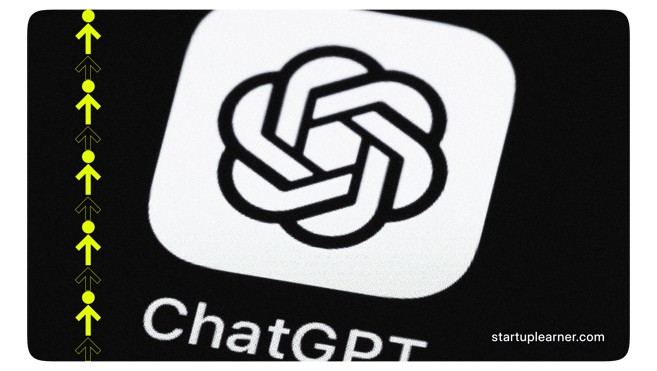AI Gold Rush: Why the Smartest Founders Are Betting Big on Boring Ideas
AIMOST RECENT
Startup Learner
4/6/20254 min read



In the inaugural episode of The Light Cone podcast by Y Combinator, group partners Gary, Jared, and Diana dive deep into the real-world startup patterns emerging from the AI revolution. Far from the hype around ChatGPT rappers and AGI, the team unpacks why some of the best startup ideas in 2024 are hidden beneath layers of unsexy workflows, obscure enterprise problems, and surprisingly powerful LLM integrations. For aspiring founders, this isn’t just a podcast—it’s a roadmap.
The 50% Shift: Why Half of YC Startups Are Now AI-Powered
The conversation kicks off with a staggering stat: nearly 50% of YC’s Summer 2023 batch built their startups using large language models (LLMs). Contrary to assumptions, this wasn’t due to some internal YC AI agenda—it was a reflection of where smart founders naturally gravitated.
“It’s not that we’re picking AI founders. The smartest founders are picking AI,” said Gary.
This influx of AI-native startups is organic. It's not driven by trend-chasing but by a palpable shift in where ambitious builders see outsized leverage—and urgency. Especially for college students and early-career engineers, the playing field is level. There are no five-year AI veterans. The best founders are just those who’ve built, tinkered, and iterated fast.
Boring Is the New Billion-Dollar Opportunity
While the media obsesses over multimodal demos and ChatGPT plugins, YC’s insiders are seeing the real traction in—get this—mundane workflow automation.
From replacing back-office grunt work to automating proposal writing for government contracts, founders are discovering gold in the muck.
Take Sweet Spot, a YC startup that pivoted from food truck ordering to automating government contract discovery and bidding. Their breakthrough came not from a whiteboard session—but by observing a friend’s mind-numbing task of refreshing a government website all day.
“That’s exactly the kind of boring problem ripe for automation,” said Jared. “If it looks tedious and repetitive, LLMs can probably 10x it.”
It’s not glamorous. It won’t trend on Twitter. But it works.
The Danger of Tar Pits and ChatGPT Wrappers
YC partners caution against a different trap: ideas that look shiny on the surface but turn out to be execution dead-ends. They call these "AI tar pits."
One big offender? “AI co-pilots for everything.” These products often get early traction from excited customers—until those same users realize they don’t know what they want the AI to do. Without clear workflows or real use cases, these startups risk becoming nothing more than chat wrappers.
“It’s like everyone wanted to check the AI box—but had no idea what problem they were solving,” said Diana.
The takeaway? Focus on use cases, not capabilities. Tools that solve a real user problem—like parsing medical documents, handling sales compliance, or managing logistics forms—are defensible. A vague AI overlay? Not so much.
MySQL Wrappers, GPT Wrappers, and the UX That Still Wins
A viral meme once mocked early AI tools as “just ChatGPT wrappers.” But as Gary points out, most SaaS products could be dismissed as “just MySQL wrappers.”
That’s missing the point.
“Software is more than what powers it. It’s about UX, clarity, and solving a job to be done,” he said.
In fact, YC is bullish on the founders who don’t lean on chat interfaces, but instead bake AI directly into traditional UX. These tools don't ask users to prompt; they just work. That invisible design—where AI quietly makes the product 10x better without changing how it's used—is becoming the standard.
Open Source Models: The Quiet Revolution
Another under-hyped trend? The rise of startups fine-tuning open-source models like LLaMA to deliver custom, high-performance solutions for specific industries. This isn’t just a cost-saving measure—it’s a competitive edge.
“You don’t need GPT-4 to build a powerful coding assistant,” said Diana. “If your vocabulary domain is small, like SQL or hardware design, a fine-tuned 2.5 model might outperform GPT-4.”
YC has already funded companies offering secure, domain-specific models for industries like healthcare, law, and hardware design. These tools don’t just compete with the big guys—they often outperform them on accuracy, speed, and privacy.
When Startups Win by Listening, Not Pitching
The best startup ideas are emerging not from labs, but from phone calls, emails, and feedback loops. One common YC pattern? Startups that began selling AI tooling to enterprises realized their customers didn’t actually use it. So what did they do?
They stopped pitching tools—and started becoming the competitor.
“If you’re trying to sell a co-pilot to a fintech company and they won’t buy it, maybe you should just build the fintech product yourself,” suggested Harge.
That’s not just a YC lesson—it’s a startup playbook.
This Is What a Tech Inflection Point Looks Like
The Light Cone team agrees: this feels like 1995 for the web, or 2007 for mobile. The curve hasn’t just bent—it’s broken.
“Startup ideas are just lying on the ground. You trip over them,” said Gary.
Even YC veterans say they’ve never seen this many successful pivots in one batch. AI is a raw material, not a product. The winners will be the ones who mold it into something specific, valuable, and hard to replicate.
Final Takeaways for Founders
Here’s the YC cheat sheet if you’re building with AI:
Solve a problem that already exists—not a hypothetical one.
Go vertical and pick a niche where you can dominate.
Avoid tar pits by validating use cases, not just market interest.
Don’t worship the chat UI—focus on invisible value.
Open source is a weapon. Use it.
You don’t need GPT-5. You need traction.
Listen to users. They’ll tell you what to build.
Build boring. Because boring wins.
This isn’t just a wave—it’s a once-in-a-generation shift. And for the right founders, the light cone of the future is brighter than ever.


